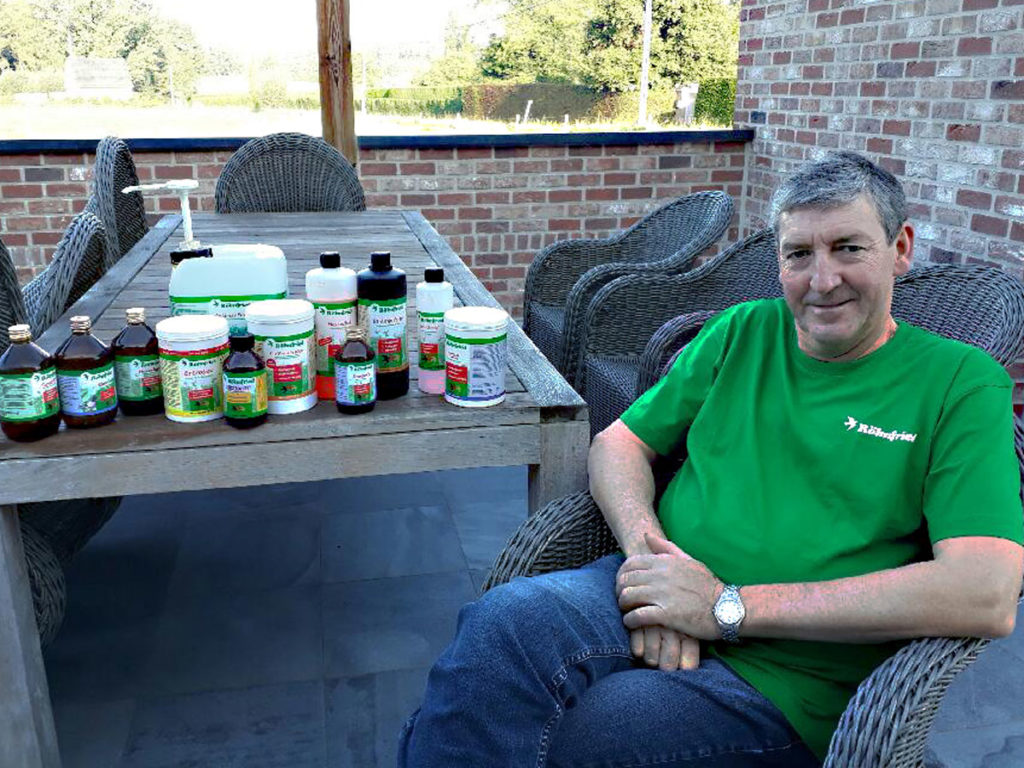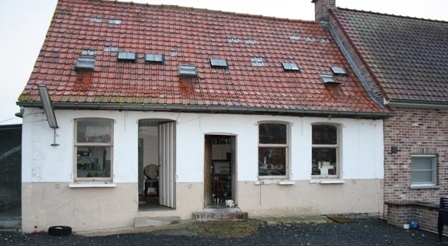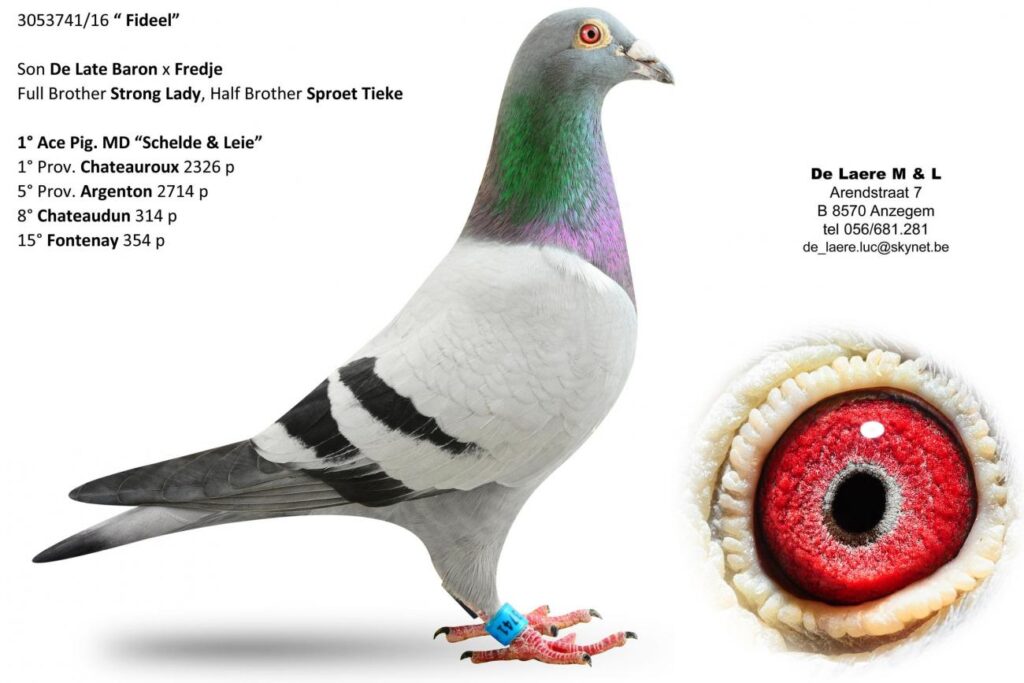Luc De Laere – A decent season…

2020 will be remembered around the world as a year when everyone had to cut down and no one thought anything like that could happen. Nevertheless: adjustments and changes had to be made be made. Our pigeon sport was not spared either. Nobody knew when we could start racing again and still we had to prepare for a possible start and a possibly act backwards.
2020 will be remembered around the world as a year when everyone had to cut down and no one thought anything like that could happen. Nevertheless: adjustments and changes had to be made be made. Our pigeon sport was not spared either. Nobody knew when we could start racing again and still we had to prepare for a possible start and a possibly act backwards.
The preventive measure was initially a blackout of the old and yearling birds. It eclipsed from March 20th to May 2nd. Then the males were mated again for five days, since the widows were already beginning to mate among themselves. Therefore, in 2021, these hens will again move to an open aviary on slats and no longer to a rather dark indoor aviary, which may stimulate the desire to mate. Finally, it seems the blackout to May 2nd was just long enough to keep the widowers in plumage until the final race on August 15th. According to plans for 2021, the males are to be blacked out again, but by May 10, as the national program begins a week later. In recent years, Luc has mainly raced his pigeons on national races. These are of greater importance compared to other international flights. The young were blacked out by June 21, which also seemed sufficient to keep them in plumage until September 12.
In 2015 Luc had an accident at work, which made it necessary to simplify all the work that he had previously devoted to my pigeons. Despite this, his pigeons continued to achieve good results. The most important aspects are healthy and good pigeons, preferably all from the same strain.
Before basketing, the males never see their females. When they come home from the race, they are allowed to stay together for three to four hours, so the mutual bond is better maintained and the hens mate less often with each other. The travel team is trained in three steps up to 30 km and the boys in four steps. Luc no longer drives his pigeons away between races, including the youngsters, which he used to do. The results are therefore not worse. Before he drives the youngsters away in the car, he releases them twice before the loft.

Expecting the late start
The absolute high-flyer was "Fideel BE16-3053741", which was in the national ranking as the best West Flemish bird led five and seven national medium-haul heavy races. Every Week this bird was there again, among other things he won the 2. Provincial win in his career and this from Argenton as 1st against 2,971 old birds. As a yearling he already won his first provincial victory Châteauroux against 2,326 yearlings. "After seven races of the males in Follow over 400km, including two over 500km, I decided to give them a week's rest before their last flight from Châteauroux. This seemed to have been a bad idea as only "Fideel" was victorious, the other birds failed. Could the saying "He who rests, rusts" maybe apply here? We think so, and that's why I'll give them only in the event of a catastrophic match or a fatal one Failure if they don't arrive until the next day," says Luc.
The young
The young males and females have been staying for a number of years
together so that I no longer use the sliding door system. All
Young animals that were weaned up to and including March 1 must be
take part in the flights. After that, about 15 to 20 young males
from the best couples after deposed. They are the reserves for them
Future.
In order to have more "early" cubs as quickly as possible, the
Delivered first round eggs to nurse pigeons. The youngsters are on
distributed three strokes. These three strokes are usually shared
trained. Training starts at the end of May. Then they all come together
and stay together for the rest of the season. Sometimes they will
some "false eggs" foisted on, allowing these young to build nests
be motivated, but that will not happen in the future. If
paired, on the nest or just single, none of that matters
Difference. Good health and quality are the most important here
Ingredients for successfully playing competitions with the young birds.
Also, it's a lot easier if they all train together because
it takes much less time.
Vaccinations & Cure
All pigeons are vaccinated against paramyxo and paratyphoid. Before the paratyphoid vaccination there is a ten day cure, after which he waits five days before the birds receive their vaccination. If the youngsters are weaned, they are vaccinated against Paramyxo. Three weeks after weaning the last youngsters, they receive a second vaccination. So the last ones get two vaccinations within three weeks. The youngsters are also vaccinated against smallpox.
During the racing season, the vet visits Luc every two weeks to avoid blind cures. If something is treated, it is always on the advice of the veterinarian. Coccidiosis used to be a problem for old birds, but this seems to be over now. In my experience, UsneGano has a positive effect on coccidiosis through the feed. I use UsneGano after the race upon arrival at the loft and continue over the next three or four feedings.

Supply of pigeons
This is how Luc proceeds: "To ensure that the pigeons recover well, they are given Bt-Amin forte and guts in their drinking water upon arrival (Bt-Amin forte is a multi-complex preparation consisting of amino acids, electrolytes and vitamin B). In the feed I use a combination of Gervit-W, UsneGano and K+K proteins. On the two following days, the birds receive Hexenbier in their drinking water and UsneGano and Ro 200 (Ro 200 is a conditioning powder) in their feed. Once they compete in the national flights they get Rotosal (butophosphane in combination with oligosaccharides) in the water and still in lightning shape the day before basketing. Every week, before departure and after returning to the loft, they receive Avisana nasal drops. They get fresh grit every day. This mixture contains grit, lickstone, mineral top fit and seeds. During the season I add Avidress Plus (acid) to the trough every day to combat trichomonas. During the season, the day after the flight, the pigeons get a yellow drop in their nose. Next year these will be added to the feed so that I have less work to do.
Achievements 2020
Achievements 2020
Achievements 2020
0Achievements 2020
Achievements 2020
Achievements 2020



